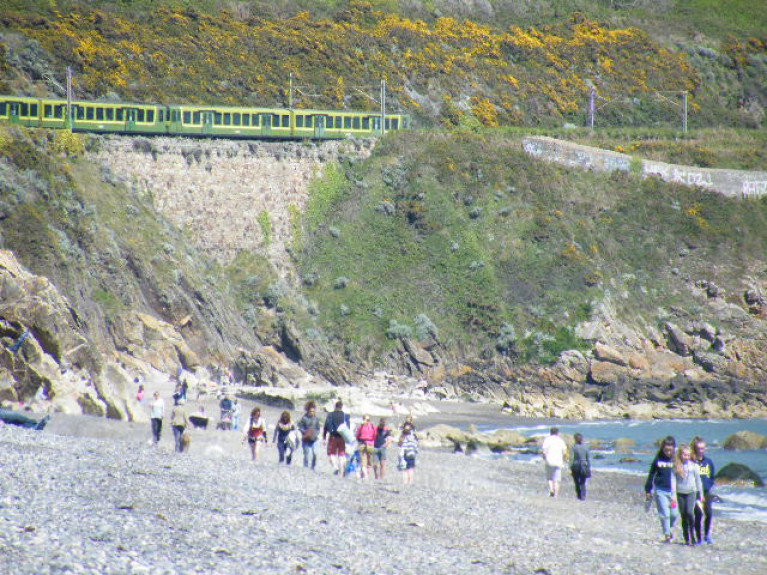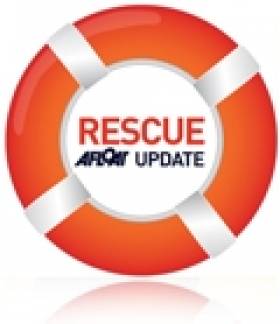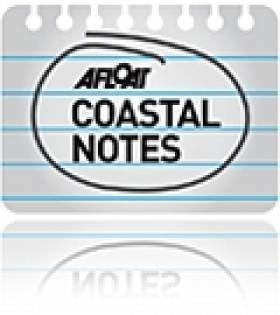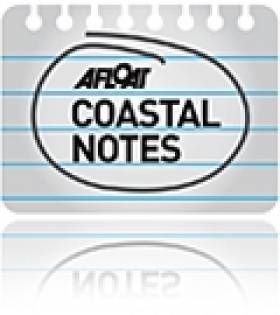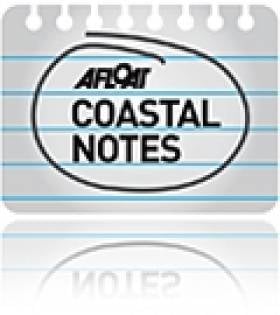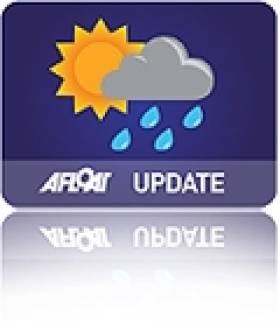Displaying items by tag: bathing
Blue Flags totalling a record 93 have been awarded to beaches and marinas across the country for the 2021 bathing season.
Four additional beaches are receiving the award this year, which is given for compliance with sewage treatment as well as for the quality of bathing water.
Four new beaches are among the 93 Blue Flags awarded by An Taisce for this year's bathing season.
They include two beaches in Cork. Inchydoney East Beach has achieved Blue Flag Status for the first time. While Warren, Cregane Strand gets its Blue Flag status back for the first time since 2013.
More from RTE News
'Excellent' Result for Clare Bathing Areas in EPA report
#clarebeaches – A newly published report by the EPA on Bathing Water Quality around Ireland has found that County Clare's 11 designated bathing areas were adjudged to have "Excellent Water Quality" during 2014.
The marine environment news has been described as "hugely significant and positive news" by Clare County Council in light of the newly introduced EU standards for bathing areas, deemed by the EPA to be almost twice as strict as those applied in previous years.
Bathing waters were classified into four categories, namely 'Poor', 'Sufficient', 'Good' and the newly introduced 'Excellent' category. The classification system is based on the levels of E. Coli and intestinal enterococci detected in the bathing water during the 2014 bathing season.
Clare is one of five Local Authority areas to receive "Excellent" classifications for each of its bathing areas, the others being Dun Laoghaire Rathdown, Kerry, Leitrim and Louth.
Clare's 11 bathing areas are Ballyalla Lake (Ennis), White Strand (Milltown Malbay), Ballycuggeran (Lough Derg), Cappa Pier (Kilrush), Bishopsquarter, White Strand (Doonbeg), Kilkee, Spanish Point, Lahinch, Fanore and Mountshannon (Lough Derg).
"This is a magnificent achievement for County Clare and those who work throughout the year to safeguard our bathing areas from environmental pollution and to ensure that the public can enjoy these locations in the knowledge that they are bathing in clean waters," stated Councillor John Crowe, Cathaoirleach of Clare County Council.
He added: "This clean sweep for Clare is something that all tourism interests in the County should be aware of as we must now promote our quality beaches and other bathing locations, particularly in light of the growing numbers of visitors arriving in Clare during their journey along the Wild Atlantic Way."
"I wish to pay tribute to the Environment Section of Clare County Council and those living and working in the vicinity of Clare's 11 bathing locations for their due diligence and hard work in delivering this result. It's one that benefits our County's reputation and of course, the environment," said Councillor Crowe.
"The Council is delighted that each of the 11 designated bathing areas that it monitors achieved 'Excellent' status. This achievement is notable in light of the considerable disruption caused to many locations during the storms of early 2014, as well as the newly introduced standards for assessing bathing areas which are almost twice as strict as those previously applied. Our goal now is to maintain these high standards throughout 2015," explained Paul Moroney Senior Engineer, Clare County Council:
Commenting on the bathing water quality results, Dr Matthew Crowe, Director of the EPA's Office of Environmental Assessment, said: "Overall, the quality of Ireland's bathing waters continues to be very good and new standards introduced in 2014 provide a much higher level of protection for bathers."
"Disappointingly, seven identified bathing waters have been assessed as being of poor quality. The relevant local authorities and Irish Water have put management plans in place to tackle the main pollution risks at these beaches. The test will be whether or not we see the necessary improvements in water quality at these beaches," added Dr. Crowe.
The summary report 'Bathing Water Quality in Ireland – A Report for the Year 2014' is available to download from www.epa.ie.
Bathing Bans For More East Coast Beaches
#BathingBan - Following the news of swimming bans at Killiney and Sandycove Harbour, The Irish Times reports on similar advisories on more beaches on the east coast coming after last weekend's heavy rain.
Elevated bacteria levels have been detected this week at Bettystown in Co Meath, Clogherhead and Templetown in Co Louth, Dollymount Strand on Bull Island, Howth's Claremont Beach and Loughshinny Beach between Rush and Skerries.
All locations have been retested with results awaited within the next few days. Contamination from floodwaters is suspected to be the most probable cause.
The Irish Times has more on the story HERE.
Lifeguards Rescued 413 Swimmers Last Month
#watersafety – The CEO of Irish Water Safety, John leech is urging the public to use the Local Authority manned lifeguarded bathing places to ensure there are no more swimming tragedies this summer.
Please take heed of advice given by the lifeguards and supervise your children, as lifeguards are not baby sitters.
Lifeguards rescued 413 casualties from our beaches, rivers and lakes during the month of July, that is 146 less than for last July during that memorable heat wave.
There were 353 lost children reunited with their parents.
There were another 8,442 accidents prevented by the proactive actions of our lifeguards.
The CEO is also warning the public that due to the high temperatures in our waters, the prevailing westerly winds and Atlantic current, potentially dangerous jellyfish are appearing on our beaches.
Portuguese man o 'war jelly fish have been reported on Bunmahon and Clonea strand in Waterford, whilst barrel jellyfish have been reported on beaches in Cork.
|
|||||||||||||||||||||||||||||||||||||||||||||||||||||||||||||||||||||||||||||||||||||||||||||||||||||||||||||||||||||||||||||||||||||||||||||||||||||||||||||||||||||||||||||||||||||||
97% Of Ireland's Bathing Spots Rated Fit For A Dip
#CoastalNotes - The vast majority of Irish beaches are fit for bathing, according to the latest figures from the Environmental Protection Agency (EPA).
But as The Irish Times reports, any bathing spots that fail to meet the EU's minimum requirements in future will be closed for an entire season.
Of the 135 bathing places assessed by the EPA over the past 12 months, just four were rated as 'poor' quality.
Two of these were in Co Galway - Ballyloughane in Galway city, which experienced two pollution incidents; and Clifden, which "continues to be subject to episodic pollution" after it was identified among 40 towns nationwide still discharging raw sewage, though work is ongoing to upgrade the local treatment plant.
Some 114 bathing spots were rated 'good', and would have been rated higher if not for low but persistent bacterial levels in some East Coast waters.
Nationwide, the EPA's verdict is that better wastewater management practices have resulted in improving standards, maintaining Ireland's position as "one of the best countries in northern Europe" for water quality.
The Irish Times has much more on the story HERE.
Forty Foot Swimming Club Maintains Ban on Women
#FORTY FOOT - The Irish Times reports that a men-only bathing club at the famous Forty Foot swimming spot in Sandycove, south Dublin, has voted against a proposal to allow women members.
While the area is open for all - and has allowed both sexes for more than 25 years - the adjacent clubhouse and changing hut are owned by the Sandycove Bathers' Association, founded in the late 19th century.
The Dublin Bay club does not grant full membership to women, though many do contribute an annual maintenance fee.
At a meeting on Thursday to discuss the proposed motion - rejected by a vote of 24 to 17 - one unnamed member described what he perceived as "an underlying tone of misogyny".
The Irish Times has more on the story HERE.
Cork Beach Bathing Ban Lifted as E.coli Levels Drop 'Significantly'
#COASTAL NOTES - The bathing ban imposed last week on seven Cork coastal beaches has been lifted, according to RTÉ News.
As previously reported on Afloat.ie, the seven beaches had been closed to swimming over concerns at elevated E.coli levels in the water, resulting from water runoff after the recent heavy rainfall in the county.
Cork County Council took the decision to lift restrictions after tests this week showed E.coli levels had "significantly descreaed" below the EU mandatory safety level.
The seven affected beaches included three in the Youghal area. Redbarn at Youghal joins Garretsown near Kinsale and Garryvoe in the beaches that can fly their Blue Flags once more.
Cork Beach Closures Continue as E.coli Results Awaited
#COASTAL NOTES - Cork County Council has announced it will be at least two more days before it knows if its bathing ban at seven beaches can be lifted, according to RTÉ News.
As previously reported on Afloat.ie, the seven coastal beaches - including blue flag strands at Garretstown, Redbarn and Garryvoe - have been closed to swimming over concerns at elevated E.coli levels in the water, resuling from water runoff after the recent heavy rainfall in the county.
Notices were first posted by the council last Friday, and the latest water samples were collected at the affected beaches yesterday.
Youghal is the worst affected by the outbreak, with three beaches closed.
Meanwhile, a popular east coast beach has been reopened after a similar E.coli scare.
The Irish Independent reports that Rush South in north Co Dublin was closed to bathers after bacterial contamination was detected over the August bank holiday weekend.
Levels of E.coli recorded in the water were at 2,143, above the EU mandatory level of 2,000, but samples taken since have been given the all-clear.
A spokesperson for Fingal County Council described it as "a once-off pollution incident that will not have any ongoing impact on bathing at Rush South".
Cork Beaches Closed to Bathing Over Elevated E.coli Levels
#COASTAL NOTES - Some of Cork's most popular beaches have been closed to bathers over concerns at elevated levels of E.coli in the water.
According to The Irish Times, the bathing ban affects the blue flag beaches at Garretstown near Kinsale, Redbarn at Youghal and Garryvoe, while other beaches affected include Coolmaine near Kilbittain, Oysterhaven and two other stretches in Youghal.
Water runoff from the heavy rainfall experienced in the county earlier in the summer has been blamed for the increase of the dangerous bacteria above mandatory EU safety levels.
This is similar to that which caused the closure of bathing and surfing spots on the Clare coast last month, as previously reported on Afloat.ie.
The Irish Examiner explains that E.coli is commonly found in slurry, much of which has been washed from farms into the sea as a result of the record rains of recent weeks.
The situation has been compounded by southerly winds which have prevented the dispersal of the polluted water from the coastline.
Cork County Council has contacted the HSE and the Environmental Protection Agency (EPA) and will carry out further inspections of water quality tomorrow.
Meanwhile, Cork County Mayor and Youghal Councillor Barbara Murray has called for improvements to the water sampling process.
“You don’t just do this on a Monday and decide you are not going to do it again until the following Monday," she said. “So I would be suggesting that it would be done on a more regular basis and that the results be brought in as soon as possible."
The Irish Times has more on the story HERE.
Easy Swim at Forty Foot on Warmest Christmas Day in Years
#WEATHER - Those hardy Yuletide bathers at the Forty Foot in Dublin didn't need to be so brave this year, as Ireland experienced one of the warmest Christmas Days on record.
Just one year ago Ireland was in the grip of a deep freeze. But as the Irish Independent reports, temperatures on Sunday last rose to as much as 14.4 degrees in Co Cork.
It's been almost a decade since late December temperatures reached such levels, when Christmas in 2002 saw highs of 14.6 degrees according to Met Éireann records.
Sunny spells on the east coast brought out the polar bear plungers to Sandymount and the Grand Canal as well as the famous Forty Foot bathing spot in Sandycove.
The Irish Independent has more on the story HERE.


























